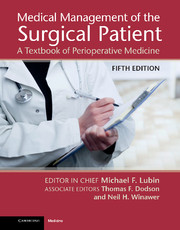Book contents
- Frontmatter
- Dedication
- Contents
- List of Contributors
- Preface
- Introduction
- Part 1 Perioperative Care of the Surgical Patient
- Part 2 Surgical Procedures and their Complications
- Section 17 General Surgery
- Chapter 47 Tracheostomy
- Chapter 48 Thyroidectomy
- Chapter 49 Parathyroidectomy
- Chapter 50 Lumpectomy and mastectomy
- Chapter 51 Gastric procedures (including laparoscopic antireflux, gastric bypass, and gastric banding)
- Chapter 52 Small bowel resection
- Chapter 53 Appendectomy
- Chapter 54 Colon resection
- Chapter 55 Abdominoperineal resection/coloanal or ileoanal anastomoses
- Chapter 56 Anal operations
- Chapter 57 Cholecystectomy
- Chapter 58 Common bile duct exploration
- Chapter 59 Major hepatic resection
- Chapter 60 Splenectomy
- Chapter 61 Pancreatoduodenal resection
- Chapter 62 Adrenal surgery
- Chapter 63 Lysis of adhesions
- Chapter 64 Ventral hernia repair
- Chapter 65 Inguinal hernia repair
- Chapter 66 Laparotomy in patients with human immunodeficiency virus infection
- Chapter 67 Abdominal trauma
- Section 18 Cardiothoracic Surgery
- Section 19 Vascular Surgery
- Section 20 Plastic and Reconstructive Surgery
- Section 21 Gynecologic Surgery
- Section 22 Neurologic Surgery
- Section 23 Ophthalmic Surgery
- Section 24 Orthopedic Surgery
- Section 25 Otolaryngologic Surgery
- Section 26 Urologic Surgery
- Index
- References
Chapter 56 - Anal operations
from Section 17 - General Surgery
Published online by Cambridge University Press: 05 September 2013
- Frontmatter
- Dedication
- Contents
- List of Contributors
- Preface
- Introduction
- Part 1 Perioperative Care of the Surgical Patient
- Part 2 Surgical Procedures and their Complications
- Section 17 General Surgery
- Chapter 47 Tracheostomy
- Chapter 48 Thyroidectomy
- Chapter 49 Parathyroidectomy
- Chapter 50 Lumpectomy and mastectomy
- Chapter 51 Gastric procedures (including laparoscopic antireflux, gastric bypass, and gastric banding)
- Chapter 52 Small bowel resection
- Chapter 53 Appendectomy
- Chapter 54 Colon resection
- Chapter 55 Abdominoperineal resection/coloanal or ileoanal anastomoses
- Chapter 56 Anal operations
- Chapter 57 Cholecystectomy
- Chapter 58 Common bile duct exploration
- Chapter 59 Major hepatic resection
- Chapter 60 Splenectomy
- Chapter 61 Pancreatoduodenal resection
- Chapter 62 Adrenal surgery
- Chapter 63 Lysis of adhesions
- Chapter 64 Ventral hernia repair
- Chapter 65 Inguinal hernia repair
- Chapter 66 Laparotomy in patients with human immunodeficiency virus infection
- Chapter 67 Abdominal trauma
- Section 18 Cardiothoracic Surgery
- Section 19 Vascular Surgery
- Section 20 Plastic and Reconstructive Surgery
- Section 21 Gynecologic Surgery
- Section 22 Neurologic Surgery
- Section 23 Ophthalmic Surgery
- Section 24 Orthopedic Surgery
- Section 25 Otolaryngologic Surgery
- Section 26 Urologic Surgery
- Index
- References
Summary
Anal operations are among the most common operations performed by general surgeons. The procedures include hemorrhoidectomy, incision and drainage of perirectal or ischiorectal abscess, excision and fulguration of anal condylomata, identification of perianal fistula with drainage and seton placement, and partial lateral internal sphincterotomy. Hemorrhoids are caused by increased pressure in the venous plexus of the rectum, resulting in pathologic stretching and dilation of these veins. They are classified according to their position relative to the dentate line because of the variations between the upper two-thirds and lower third of the rectum in regard to innervation, perfusion, and drainage. External hemorrhoids are below the dentate line while internal hemorrhoids are above the dentate line. Accordingly, internal hemorrhoids have a greater tendency to produce bleeding while external hemorrhoids are often sensitive and painful to patients. In general, if symptoms are minimal, management is non-operative. Patients are counseled to avoid constipation and straining during bowel movements and to utilize stool softeners. Small hemorrhoids can be treated with topical anesthetics, warm water (sitz) baths and, if necessary, topical steroids. In general, surgical intervention is indicated when patients have uncontrollable pain, persistent severe bleeding, or prolapse, provided the patient does not have a medical contraindication such as portal hypertension or hematologic dyscrasia. For patients who are poor operative candidates, internal hemorrhoids can be treated in the office via rubber band ligation. In these patients, a rubber band is placed at the base of the hemorrhoid to induce ischemia and sloughing. Band ligation is relatively contraindicated in patients on anticoagulation, as it can result in severe anal bleeding. Operation involves open excision (external and internal) or stapled hemorrhoidectomy (internal hemorrhoids only).
Anal fissures are typically posterior acute or chronic ulcers that result from continued tearing and hypertrophy of the internal sphincter in patients with constipation. This results in painful defecation. Initial treatment is to minimize constipation via diet change and stool softeners. Medical treatment focuses on the use of topical agents that relax the internal sphincter, such as topical nitroglycerin, oral or topical calcium channel blockers, or local Botox injections. If the fissure fails to heal with medical management, operative intervention requires identification of the internal sphincter and partial transection. Generally, the fissure is then cauterized, or in cases of large chronic ulcers, excised and repaired via a local mucosal advancement flap.
- Type
- Chapter
- Information
- Medical Management of the Surgical PatientA Textbook of Perioperative Medicine, pp. 528 - 530Publisher: Cambridge University PressPrint publication year: 2013

